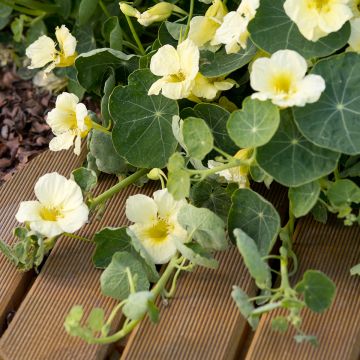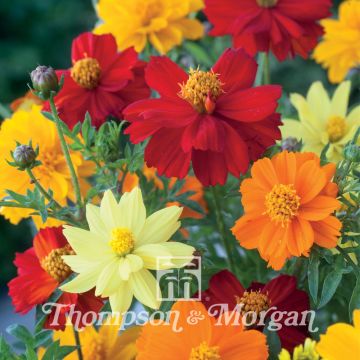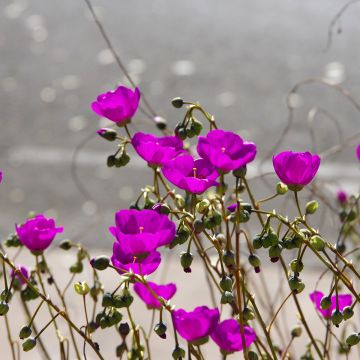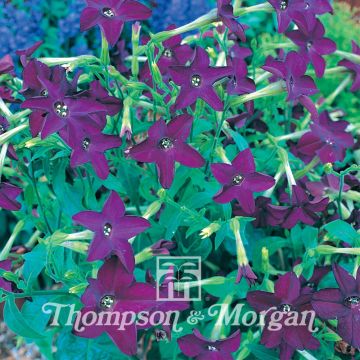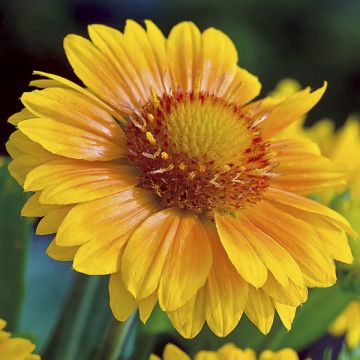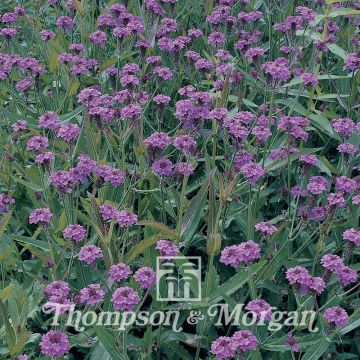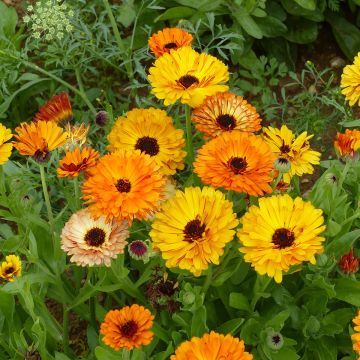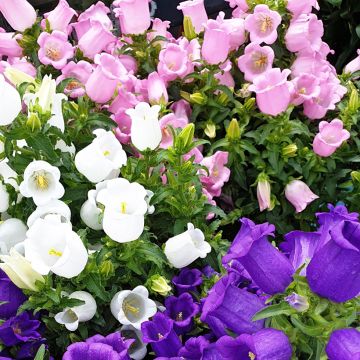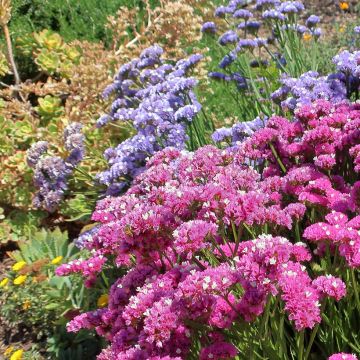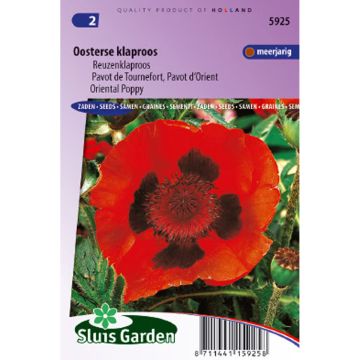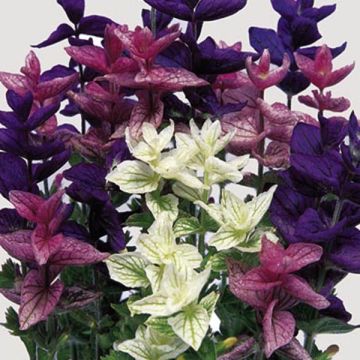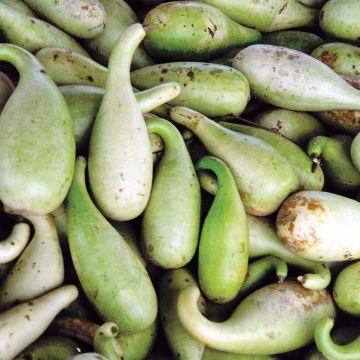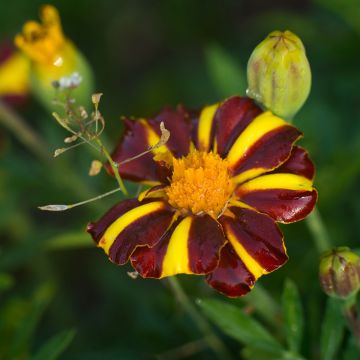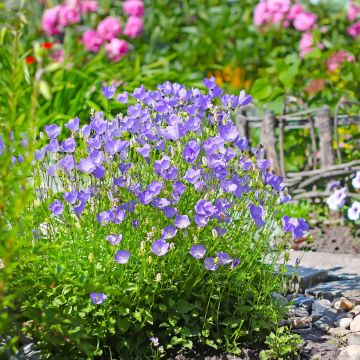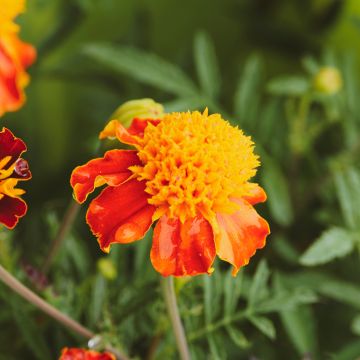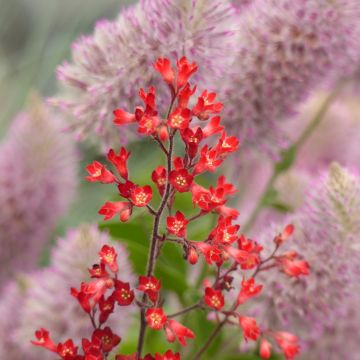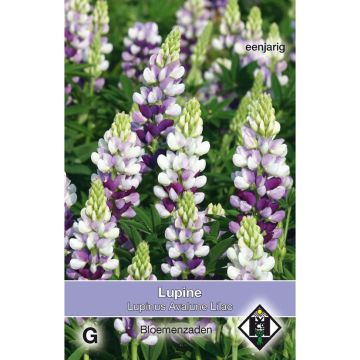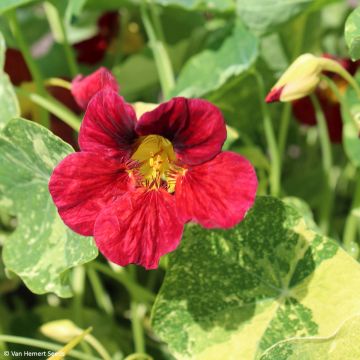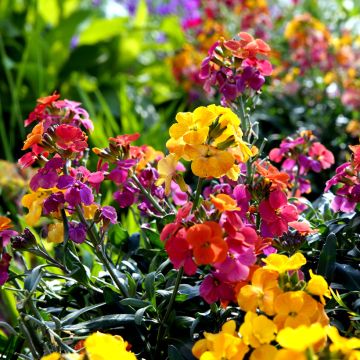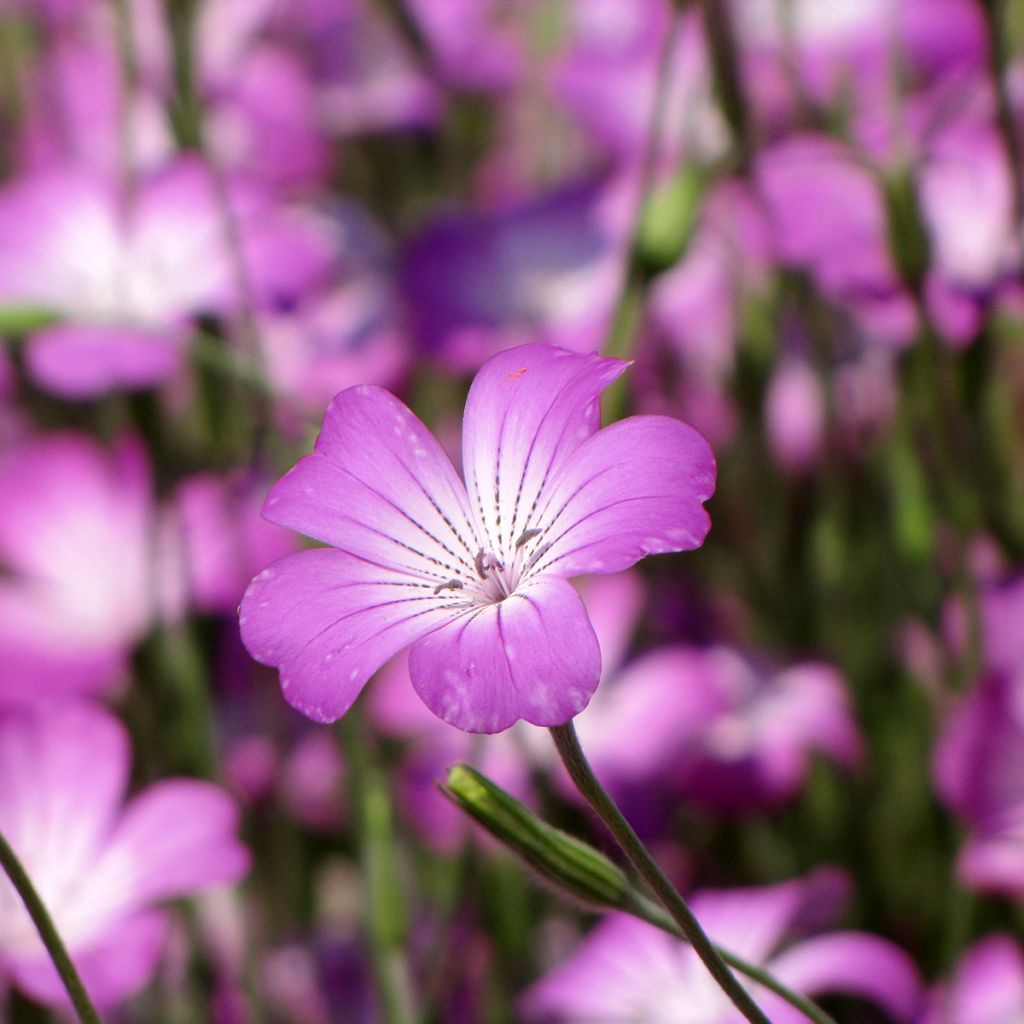

Graines de nielle des blés Coquelourde Milas - Agrostemma githago
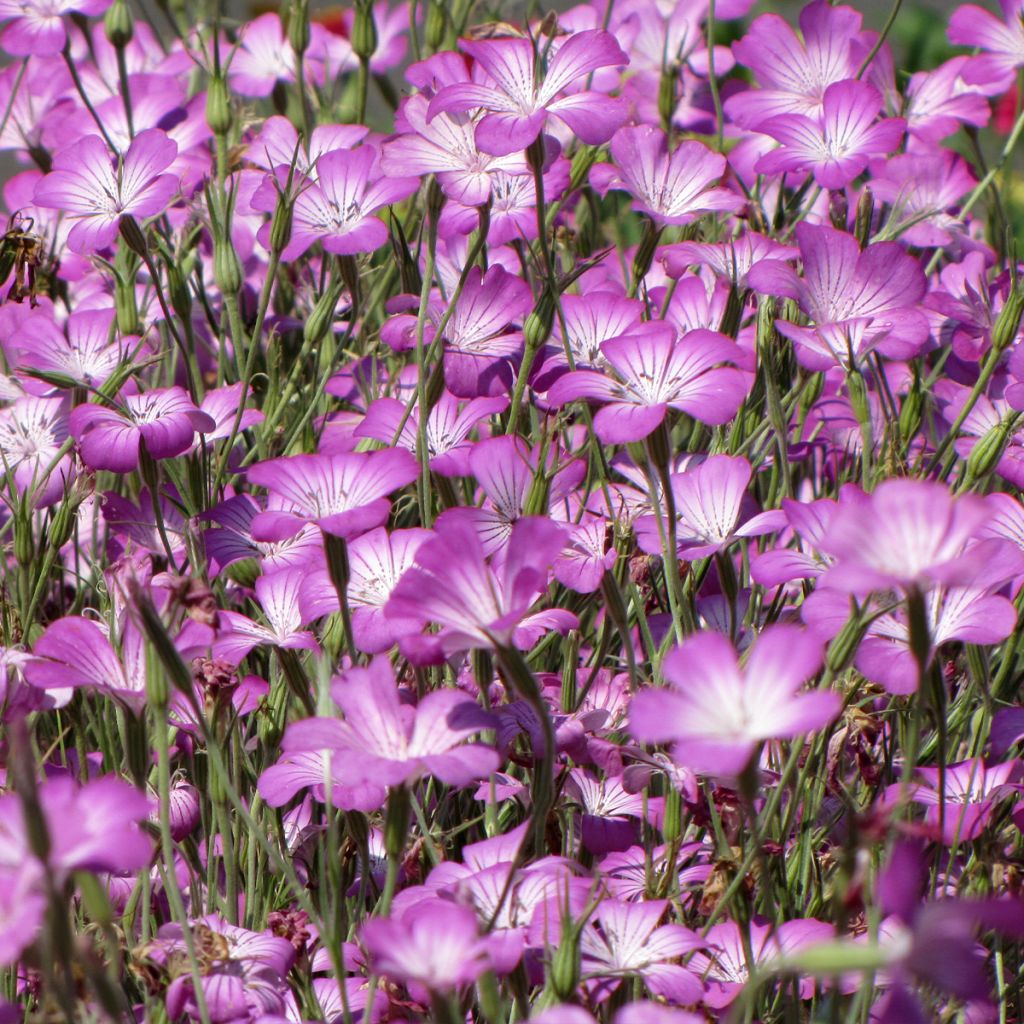

Graines de nielle des blés Coquelourde Milas - Agrostemma githago
Corncockle Seeds - Agrostemma githago
Agrostemma githago Milas
This item cannot be shipped to the selected country
Dispatch by letter from €3.90
More information
Schedule delivery date,
and select date in basket
This plant carries a 6 months recovery warranty
More information
We guarantee the quality of our plants for a full growing cycle, and will replace at our expense any plant that fails to recover under normal climatic and planting conditions.
Seed-only orders are dispatched by sealed envelope. The delivery charge for seed-only orders is €3.90.
Does this plant fit my garden?
Set up your Plantfit profile →
Description
Agrostemma githago, commonly named Corncockle, is an adorable annual weed that was once widespread in grain fields and is now in danger of extinction. This plant shares the beauty of common wildflowers. In summer, it blooms in large funnel-shaped flowers, which can be white, pink or veined with purple pink and are held at the tips of tall, hairy, sinewy stems. Very decorative at the back of cottage garden flower beds, corncockle enjoys the full sun and fertile, well-drained soil.
Corncockle belongs to the Caryophyllaceae family. It is a herbaceous annual native to Europe, temperate Asia and North Africa, that has spread to almost every continent because its seeds used to be mixed with wheat crops. Long considered an invasive and dangerous weed in cereal crops, it has now become rare and is probably one of the most beautiful wildflowers of our regions. It quickly forms upright, sparsely branched stems with a narrow, sinuous habit, and reaches a height of 50 cm to 1 m when in flower. A large part of the plant is covered with silky grey hairs, which are denser on the leaves and even denser near the flower. The leaves are linear or narrow and lanceolate. Each leaf shows a well-marked midrib. Its flowers appear between June and August, followed by fruits from July to September, depending on weather conditions. The pedicellate flowers are united in cymes that are usually purple but can sometimes be white or white-pink and emerge from a hairy calyx that is swollen at its base. They measure from 3 cm to 5 cm in diameter. Whatever the colour of the petals, they are striped by five dark veins, which form more or less visible and continuous longitudinal striations. Pollination is achieved by foraging insects. The fruit is a large, swollen, tough, ovoid capsule containing 30 to 40 black, bumpy seeds covered with rough protuberances, that are about the size of a grain of wheat and very poisonous.
Simple, pretty and graceful, Corncockle sways in the slightest breeze, bringing the charm of the countryside to our gardens. Sow it in the back of wild-looking flower beds where it will be sublime and get along wonderfully with ornamental grasses such as Stipa tenuifolia or Mulhenbergia capillaris, catmints, pink Love-in-a-Mists, Californian poppies, maroon cornflowers. It performs well in rock gardens serving as a beautiful summer decoration and its flowers can also be used in bouquets. It is a very easy flower to grow, even in pots.
About the disappearance of this species:
Although studies have shown that there is a 20-50% increase in the size of wheat when it lives in symbiosis with corncockle, the toxicity of its seeds (for human or animal consumption) which is due to the presence of saponin, has led to its elimination from our landscapes. Today, selective weed killers and mechanical sorting of grains have gradually eliminated it from our crops. However, used in low doses, saponins can be used in phytotherapy for their anti-haemorrhagic, expectorant, de-worming and diuretic properties.
Report an error about the product description
Corncockle Seeds - Agrostemma githago in pictures
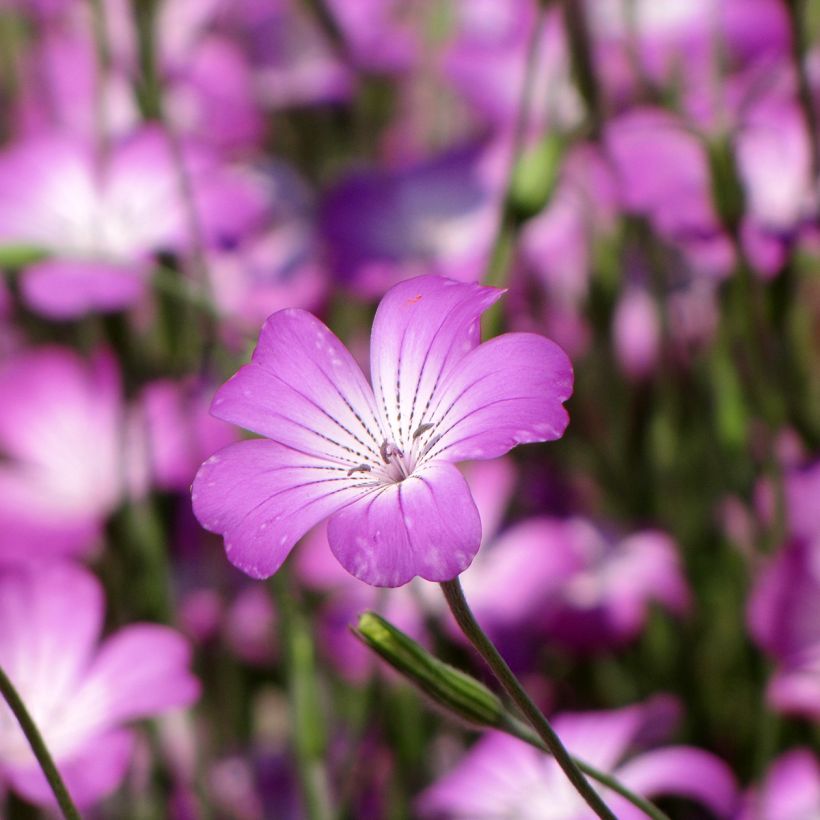

Flowering
Foliage
Plant habit
Botanical data
Agrostemma
githago
Milas
Caryophyllaceae
Cultivar or hybrid
Other Thompson and Morgan seeds
Planting and care
Sowing:
Sow the corncockle seeds from March to May directly outdoors or in a pot, tray, without covering the seeds (light is beneficial to their germination). Keep at a temperature of 18 °C.
Transplant into the ground as soon as the plants are large enough to be handled. Sowing can be done directly after all risk of frost has passed. Broadcast seeds sparingly, and thin out to 20 to 25 cm apart. Spacing between seeds: 25 to 30 cm between plants. Recommended minimum sowing temperature: 18 °C to 20 °C.
You can also sow seeds at the end of summer, in September at 16°- 21°, for blooms the following year.
Prick out in a pot and then plant out, spacing the seedlings 30 cm apart.
Cultivation:
Corncockle is an undemanding plant which can be grown in any ordinary, rather fertile, well-drained soil. Sow directly outside, where they are to flower, in a sunny spot. Grown in poor, dry soil, it will be smaller but will still be able to flower abundantly.
Sowing period
Intended location
This item has not been reviewed yet - be the first to leave a review about it.
Flower seeds
Haven't found what you were looking for?
Hardiness is the lowest winter temperature a plant can endure without suffering serious damage or even dying. However, hardiness is affected by location (a sheltered area, such as a patio), protection (winter cover) and soil type (hardiness is improved by well-drained soil).

Photo Sharing Terms & Conditions
In order to encourage gardeners to interact and share their experiences, Promesse de fleurs offers various media enabling content to be uploaded onto its Site - in particular via the ‘Photo sharing’ module.
The User agrees to refrain from:
- Posting any content that is illegal, prejudicial, insulting, racist, inciteful to hatred, revisionist, contrary to public decency, that infringes on privacy or on the privacy rights of third parties, in particular the publicity rights of persons and goods, intellectual property rights, or the right to privacy.
- Submitting content on behalf of a third party;
- Impersonate the identity of a third party and/or publish any personal information about a third party;
In general, the User undertakes to refrain from any unethical behaviour.
All Content (in particular text, comments, files, images, photos, videos, creative works, etc.), which may be subject to property or intellectual property rights, image or other private rights, shall remain the property of the User, subject to the limited rights granted by the terms of the licence granted by Promesse de fleurs as stated below. Users are at liberty to publish or not to publish such Content on the Site, notably via the ‘Photo Sharing’ facility, and accept that this Content shall be made public and freely accessible, notably on the Internet.
Users further acknowledge, undertake to have ,and guarantee that they hold all necessary rights and permissions to publish such material on the Site, in particular with regard to the legislation in force pertaining to any privacy, property, intellectual property, image, or contractual rights, or rights of any other nature. By publishing such Content on the Site, Users acknowledge accepting full liability as publishers of the Content within the meaning of the law, and grant Promesse de fleurs, free of charge, an inclusive, worldwide licence for the said Content for the entire duration of its publication, including all reproduction, representation, up/downloading, displaying, performing, transmission, and storage rights.
Users also grant permission for their name to be linked to the Content and accept that this link may not always be made available.
By engaging in posting material, Users consent to their Content becoming automatically accessible on the Internet, in particular on other sites and/or blogs and/or web pages of the Promesse de fleurs site, including in particular social pages and the Promesse de fleurs catalogue.
Users may secure the removal of entrusted content free of charge by issuing a simple request via our contact form.
The flowering period indicated on our website applies to countries and regions located in USDA zone 8 (France, the United Kingdom, Ireland, the Netherlands, etc.)
It will vary according to where you live:
- In zones 9 to 10 (Italy, Spain, Greece, etc.), flowering will occur about 2 to 4 weeks earlier.
- In zones 6 to 7 (Germany, Poland, Slovenia, and lower mountainous regions), flowering will be delayed by 2 to 3 weeks.
- In zone 5 (Central Europe, Scandinavia), blooming will be delayed by 3 to 5 weeks.
In temperate climates, pruning of spring-flowering shrubs (forsythia, spireas, etc.) should be done just after flowering.
Pruning of summer-flowering shrubs (Indian Lilac, Perovskia, etc.) can be done in winter or spring.
In cold regions as well as with frost-sensitive plants, avoid pruning too early when severe frosts may still occur.
The planting period indicated on our website applies to countries and regions located in USDA zone 8 (France, United Kingdom, Ireland, Netherlands).
It will vary according to where you live:
- In Mediterranean zones (Marseille, Madrid, Milan, etc.), autumn and winter are the best planting periods.
- In continental zones (Strasbourg, Munich, Vienna, etc.), delay planting by 2 to 3 weeks in spring and bring it forward by 2 to 4 weeks in autumn.
- In mountainous regions (the Alps, Pyrenees, Carpathians, etc.), it is best to plant in late spring (May-June) or late summer (August-September).
The harvesting period indicated on our website applies to countries and regions in USDA zone 8 (France, England, Ireland, the Netherlands).
In colder areas (Scandinavia, Poland, Austria...) fruit and vegetable harvests are likely to be delayed by 3-4 weeks.
In warmer areas (Italy, Spain, Greece, etc.), harvesting will probably take place earlier, depending on weather conditions.
The sowing periods indicated on our website apply to countries and regions within USDA Zone 8 (France, UK, Ireland, Netherlands).
In colder areas (Scandinavia, Poland, Austria...), delay any outdoor sowing by 3-4 weeks, or sow under glass.
In warmer climes (Italy, Spain, Greece, etc.), bring outdoor sowing forward by a few weeks.

































